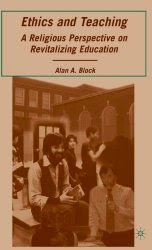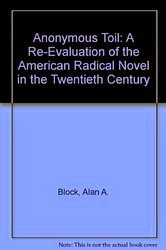
In an infamous review from perhaps 1968, Robert Christgau opened
his screed directed at Dylan’s Self-Portrait
with the question, “What is this Shit?” I don’t think he enjoyed the album very
much, though over time he may have come to some appreciation of it. Of course,
Christgau’s rhetorical question as the opening of his review lacked
sophistication and indicated that there would be here no indirection to find
direction out. And indeed, the tenor of the review never improved; to some
extent, the review was worthless except to the consumer whose faith in
Christgau’s judgment would incline him to purchase the album or not. As for me, I was apt to purchase any Dylan’s
new production sight unseen—and I am still so prone. The vinyl copy of Self Portrait lies still in the bin of
vinyl copies of my collection, and I am forever interested in autobiography. Perhaps
Christgau’s statement spoke to his disappointment with Dylan’s product more
than it spoke to the product itself, but that is neither here nor there, nor do
I mean it as the topic of this blog.
Which is:
For reasons beyond my
understanding, I have been receiving subscriptions to magazines to which I have not subscribed. For a number
of years I would find the unpurchased Rolling
Stone in the mailbox, and I was content to peruse the latest news of my
rock n’ roll heroes and glance cursorily at its upcoming stars. But lately I
have been overwhelmed with unsolicited magazines: Reader’s Digest, Parents, Redbook, Oprah, The Handyman (my personal
favorite since I don’t own a hammer or screwdriver), and Newsweek. The latter is the topic here: I look at the last two
covers of Newsweek magazine and I
say, “What is this shit?”
The cover story of the special
double issue August 13-20 identifies the 101 Best Places To Eat in the World, the
list chosen, we are told, by 53 of the (I suppose) world’s finest chefs. I am
certain I cold not afford to dine in any of the 53 best places to eat, and so
despite the fact that the magazine was sent to my house it was not meant for
me. Further, I recall Newsweek not as
a magazine primarily concerned with life styles, and certainly not those of the
rich and famous. I recall Newsweek as
a news magazine and somewhat left of center at that., despite the comments of
George Will in the back of every issue. In this revamped version of Newsweek , (now owned and published by the Daily Beast (or is it the other way
around, I don’t quite know) the editors appear to have modeled Newsweek in the style of People or Entertainment. There is in this latest incarnation no news this
week: only glossy pictures, gossip and entertainment. What Newsweek displays in fact reveals what has occurred to news in the
21st century: it is no longer news but entertainment.
Finally, to my main point: in this
edition, across almost the entire bottom half of the cover is the supine
profiled face of a clear skinned white woman. Her face is visible only from below
the eyes: she can be seen but cannot see. Her lips, painted a deep red, are
slightly parted and her upper teeth are in shadow visible. Above her lips are
two stalks of bright green asparagus in an image that hardly disguises the
phallic nature of the event portrayed on the cover. Whether she is about to
perform fellatio, or her lips represent the vagina awaiting penetration, this
cover belongs to the culture of Playboy
and Hustler and Shades of Grey and insults the legacy of Huntley, Brinkley,
Cronkite, Severeid or Murrow. If the magazine were Playboy or Hustler I
would hide it beneath the mattress of my bed and away from the eyes of my
daughters.
The next
week’s cover offers an image of the President with a jacket slung over his left
shoulder and his face peering backwards. The photos reminds me of the cover of
Sinatra albums, though it is only the top third of Obama’s body that is shown.
And the caption on the cover reads, “Hit the Road Barack,” the title of the
cover story by Niall Fergurson, whose harsh critrique of President Obama’s
first term calls for his ouster.
Fine with me. I don’t agree with Fergurson, and I do hold
to John Stuart Mill’s opinion that “Although it is not true that all
conservatives are stupid people, it is true that most stupid people are
conservative.” He can say what he wants: but Fergurson’s article is not news and does not figure as a cover
story in a magazine titled Newsweek. His
opinion isn’t news.
 It is too early in the morning. Perhaps I was awakened by
the heat . . . but I don’t think so. In the center of the dream there was
something troubling, something incurable, something dark. Interestingly enough,
I was not threatened so much as disturbed by its presence, and having awakened
from the dream at 3:45am, I could not fall back asleep. The moon is just past
full, but its brightness illumines the landscape about my house, and it looks
like day at night. The house casts its full shadow on the North side, and as I
glance out of the window, I think I live in a mansion. I love the moon’s
illumined glance into my room; it reminds me, I hope, that there is work to be
done. Indeed, past my house at 4:00am I hear the start of the day: the tires
whine on the road as workers head toward their labor. And even that sound seems to have begun early
this morning.
It is too early in the morning. Perhaps I was awakened by
the heat . . . but I don’t think so. In the center of the dream there was
something troubling, something incurable, something dark. Interestingly enough,
I was not threatened so much as disturbed by its presence, and having awakened
from the dream at 3:45am, I could not fall back asleep. The moon is just past
full, but its brightness illumines the landscape about my house, and it looks
like day at night. The house casts its full shadow on the North side, and as I
glance out of the window, I think I live in a mansion. I love the moon’s
illumined glance into my room; it reminds me, I hope, that there is work to be
done. Indeed, past my house at 4:00am I hear the start of the day: the tires
whine on the road as workers head toward their labor. And even that sound seems to have begun early
this morning. 
















